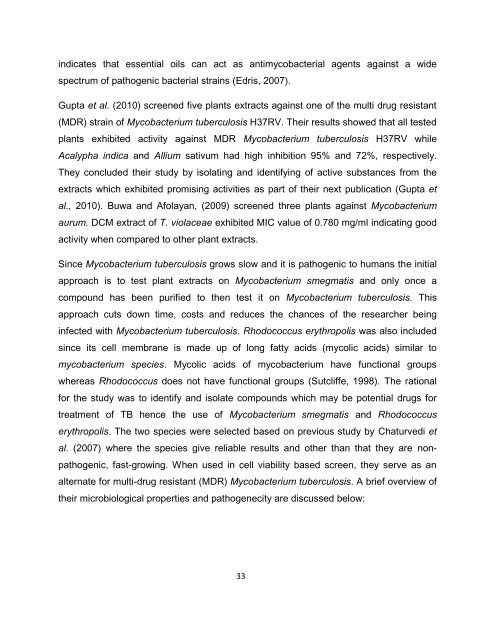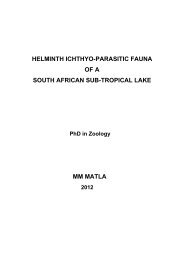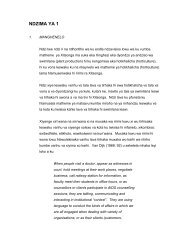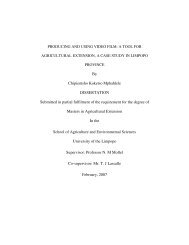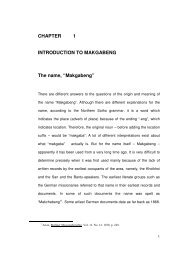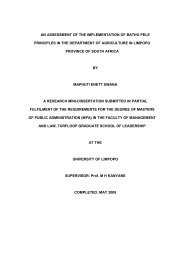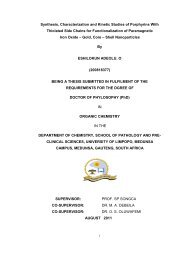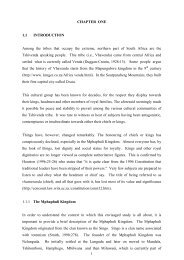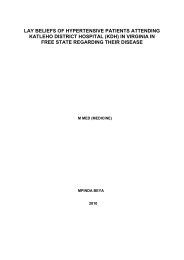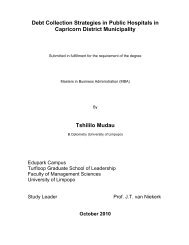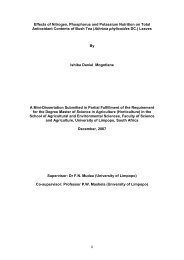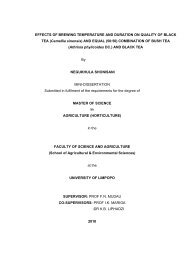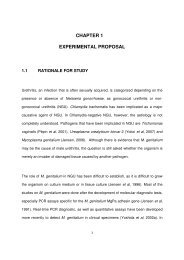Mmushi T MSc (Microbiology).pdf
Mmushi T MSc (Microbiology).pdf
Mmushi T MSc (Microbiology).pdf
Create successful ePaper yourself
Turn your PDF publications into a flip-book with our unique Google optimized e-Paper software.
indicates that essential oils can act as antimycobacterial agents against a wide<br />
spectrum of pathogenic bacterial strains (Edris, 2007).<br />
Gupta et al. (2010) screened five plants extracts against one of the multi drug resistant<br />
(MDR) strain of Mycobacterium tuberculosis H37RV. Their results showed that all tested<br />
plants exhibited activity against MDR Mycobacterium tuberculosis H37RV while<br />
Acalypha indica and Allium sativum had high inhibition 95% and 72%, respectively.<br />
They concluded their study by isolating and identifying of active substances from the<br />
extracts which exhibited promising activities as part of their next publication (Gupta et<br />
al., 2010). Buwa and Afolayan, (2009) screened three plants against Mycobacterium<br />
aurum. DCM extract of T. violaceae exhibited MIC value of 0.780 mg/ml indicating good<br />
activity when compared to other plant extracts.<br />
Since Mycobacterium tuberculosis grows slow and it is pathogenic to humans the initial<br />
approach is to test plant extracts on Mycobacterium smegmatis and only once a<br />
compound has been purified to then test it on Mycobacterium tuberculosis. This<br />
approach cuts down time, costs and reduces the chances of the researcher being<br />
infected with Mycobacterium tuberculosis. Rhodococcus erythropolis was also included<br />
since its cell membrane is made up of long fatty acids (mycolic acids) similar to<br />
mycobacterium species. Mycolic acids of mycobacterium have functional groups<br />
whereas Rhodococcus does not have functional groups (Sutcliffe, 1998). The rational<br />
for the study was to identify and isolate compounds which may be potential drugs for<br />
treatment of TB hence the use of Mycobacterium smegmatis and Rhodococcus<br />
erythropolis. The two species were selected based on previous study by Chaturvedi et<br />
al. (2007) where the species give reliable results and other than that they are nonpathogenic,<br />
fast-growing. When used in cell viability based screen, they serve as an<br />
alternate for multi-drug resistant (MDR) Mycobacterium tuberculosis. A brief overview of<br />
their microbiological properties and pathogenecity are discussed below:<br />
33


